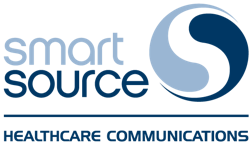
The mission of Metro Community Health Centers, Inc. is to enable access to and provide high quality, well-coordinated, primary and specialty medical, dental, behavioral, rehabilitation, and ancillary health services. Focus is on patients who are underserved, with a special commitment to the needs of people with disabilities. We commit to doing our very best to provide culturally-competent services regardless of a patient’s ability to pay.
Metro Community Health Centers offers a wide range of services in five New York City locations. Our physicians, therapists, nurses and support staff are a skilled, committed and compassionate team of healthcare professionals who provide a comfortable and caring atmosphere for all patients.
Metro Community Health Services has convenient locations in all 5 NYC boroughs: Staten Island, Bronx, Queens, Brooklyn, Manhattan working with challenged patients of all ages, ethnicities, cultures, and literacy levels . This includes individual as well as group home environments.
The Issues
Community Health Centers continue to require conservation of operation costs to preserve finances. Hiring administrative Agents can be a challenge in this current environment. Automation streamlines operations and conserves administrative finances. The logical conclusion is to implement technology to confirm and schedule appointments with a myriad of potential automation improvements planned.
Automated enhancements will allow the Critical Care patient Coordinators to focus on patients’ complex medical needs. During these complicated times with Covid constantly being a factor in care, the need to be administratively efficient is more critical than the pre-pandemic environment.
The Innovation
The goal of good technology is to augment staff, to reduce staff stress, and free people up so they can accomplish tasks primarily involving patient care, (that technology cannot accomplish). It is necessary to supplement staff workload with technology in order to accomplish these goals. Through a trusted friend we engaged with an Artificial Intelligence Company to see what would assist with these goals. The first most pressing need is to handle patient scheduling so that patients can make appointments, reschedule or confirm any time that is convenient for them. The technology works 24- 7
The Scheduling Digital Employee
Using RPA (Robotic Process Automation) we can search our Doctors’ schedules inside our EMR (electronic medical record) and to identify available appointment slots. Since 88% of all appointments are made by phone, patients have reduced wait times. Our Digital Employee answers the phone (handling multiple calls simultaneously), talks with the patient, makes the appointment, and adds it to the Doctor’s schedule and the EMR. Seven days and one day before the appointment, our Digital Employee reaches out to the patient to confirm, cancel or reschedule the appointment. During this conversation the Digital Employee can also request further information such as the patient insurance information. All this is done via speech or text and the results are documented in the scheduling tool and the patient EMR.
If there is an interruption in the process, for ANY reason, the communication is posted to an escalation console for an administrative staff to contact the patient and follow up. At any time in the conversation the patient can say “I want to talk to a nurse” and the call is transferred (during normal business hours) or sent to the escalation console. In the case of an emergency the Digital Employee can request a Doctor or EMT respond to the patient immediately.
The Follow Up Digital Employee
Scheduling stress is reduced by using the Digital Employee to handle Follow up routines that may be currently performed by a nurse, or other clinical staff. After a procedure the Digital Employee reaches out to the patient and asks predetermined questions to ascertain the patient status. If answers are as expected and nothing of concern is indicated the Digital Employee can schedule the follow up appointment per the notes in the EMR. These can be unstructured notes that indicate when the Doctor wants to see the patient again. If answers are of concern the patient is transferred to the medical staff, or the call is posted to the escalation console for human response.
Group Home Capabilities
Many of Metro’s patients are residents of Group Homes. Our Digital Employee, because it uses RPA, one phone call can handle the sched-uling of multiple appointments at one time. Likewise, it can remind for all visits associated with single home, follow up on these scheduled visits before and after, and verify each patient and each patient’s needs- Handling inbound and outbound communications and making sure all information is passed through to the individual patient’s EMR.
The Results (Standard vs. Digital Employee)
Industry standards:
- Average call length: seven to eight minutes
- Average call hold time: 50 seconds
- Call-abandonment rate: 15 percent
METRO’S immediate Call Improvements
- before implementation: 44% answer rate, 4 min + call hold times
- after implementation: 91% answer rate, 4 sec call hold times
More Plans
There are more plans in the works to utilize this AI technology. Next steps include annual visit and wellness scheduling as well as foreign language capability. There are refined metrics in the works for tracking purposes and to insure Value Added Performance bonuses for physicians.
hand-holder.com

